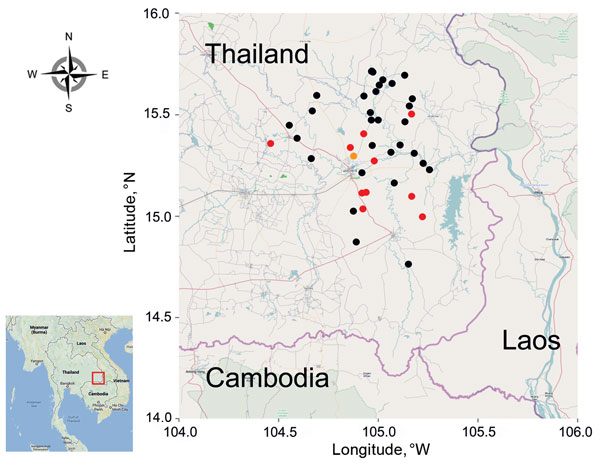Volume 20, Number 2—February 2014
Dispatch
Melioidosis Caused by Burkholderia pseudomallei in Drinking Water, Thailand, 2012
Figure 2

Figure 2. . Ubon Ratchathani Province in northeastern Thailand and locations where water samples were tested for Burkholderia pseudomallei, 2012. Location of wells, bore holes, and tap water samples that were positive are indicated by orange, red, and black circles, respectively. The red square in the inset indicates the study area in Thailand.
Page created: January 16, 2014
Page updated: January 16, 2014
Page reviewed: January 16, 2014
The conclusions, findings, and opinions expressed by authors contributing to this journal do not necessarily reflect the official position of the U.S. Department of Health and Human Services, the Public Health Service, the Centers for Disease Control and Prevention, or the authors' affiliated institutions. Use of trade names is for identification only and does not imply endorsement by any of the groups named above.